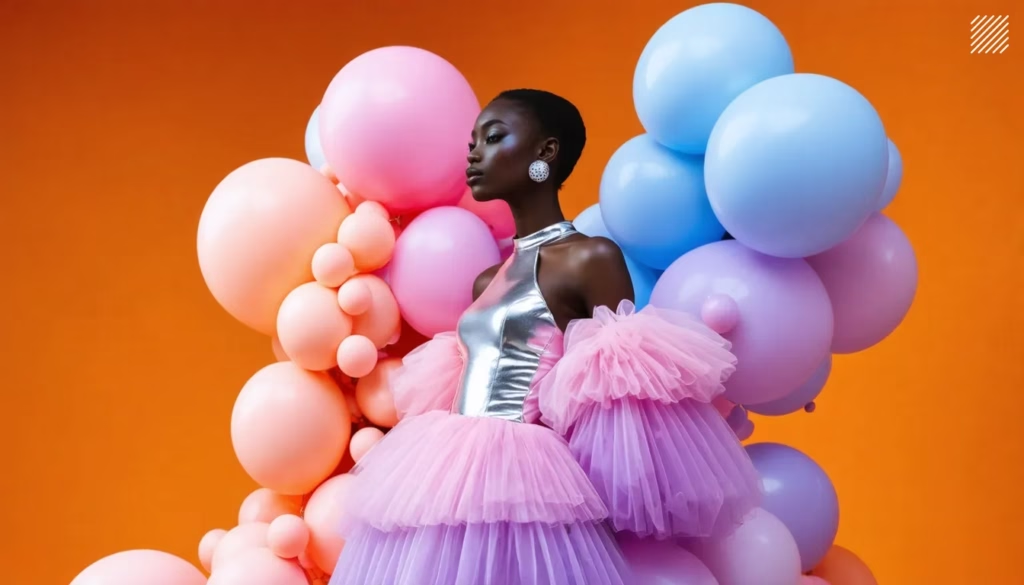
The fashion industry is no stranger to innovation. From the invention of the sewing machine to the rise of e-commerce, technological advancements have continually reshaped how fashion is created, marketed, and consumed. Today, artificial intelligence (AI) is driving the latest revolution, transforming design processes and redefining creativity. This blog explores the profound impact of AI on fashion design, from concept creation to production, and how it’s shaping the industry’s future.
The Role of AI in Fashion Design
AI has become an indispensable tool for designers, offering new ways to create, visualize, and refine their work. Here are some key ways AI is transforming the design process:
1. Automated Concept Generation
AI-powered tools can generate design concepts in seconds, analyzing trends, consumer preferences, and historical data. Platforms like AIO’s AI Fashion Studio allow designers to input prompts and receive tailored suggestions for patterns, colors, and styles. These tools enable creatives to explore endless possibilities, breaking free from traditional limitations.
2. Predictive Trend Analysis
Understanding what consumers want before they do is a game-changer. AI analyzes social media, fashion blogs, and market data to predict emerging trends. This predictive capability helps designers stay ahead of the curve, creating collections that resonate with their audience.
3. Personalization at Scale
AI enables designers to create highly personalized pieces for individual customers or target demographics. By analyzing consumer behavior and preferences, AI tools suggest designs that cater to specific tastes, ensuring higher customer satisfaction and loyalty.
4. Streamlined Prototyping
Creating physical prototypes can be time-consuming and costly. AI-generated 3D models allow designers to visualize their concepts in a realistic and interactive way, reducing the need for multiple physical samples. This accelerates the design process while minimizing waste.
5. Enhancing Creativity
AI doesn’t replace human creativity—it amplifies it. By automating repetitive tasks and offering inspiration, AI frees designers to focus on innovative and artistic aspects of their work. For instance, AI-driven tools like RunwayML and Adobe’s Sensei provide suggestions and enhancements that elevate creative projects.
AI in Sustainable Fashion
Sustainability is a pressing issue in the fashion industry, and AI plays a pivotal role in addressing it. Here’s how:
- Waste Reduction: By optimizing material usage and streamlining production processes, AI minimizes fabric waste.
- Eco-friendly Designs: AI can recommend sustainable materials and production methods, helping designers make environmentally conscious choices.
- Data-Driven Decision-Making: AI analyzes the environmental impact of designs, enabling brands to adopt more sustainable practices.
AI-Powered Tools Revolutionizing Fashion Design
AIO’s AI Fashion Design Lab
This platform empowers designers to create unique garments by leveraging AI-driven insights. From generating patterns to predicting market success, AIO simplifies complex design processes and encourages innovation.
CLO 3D
CLO 3D uses AI to create detailed 3D garment simulations, allowing designers to perfect their creations before production. This tool reduces the need for physical samples and accelerates the design cycle.
Google’s DeepDream for Inspiration
Originally created for image processing, DeepDream has found a niche in fashion by inspiring psychedelic and avant-garde designs. It’s a perfect example of how AI can push the boundaries of creativity.
FashionBrain
This AI tool combines machine learning and big data to predict fashion trends and consumer preferences. It’s an invaluable resource for designers aiming to create market-relevant collections.
Challenges and Ethical Considerations
While AI offers immense benefits, it also raises challenges and ethical questions:
- Loss of Human Touch: Over-reliance on AI might dilute the personal, artisanal aspect of fashion.
- Bias in Algorithms: AI systems can inadvertently perpetuate biases present in training data, leading to designs that lack diversity.
- Job Displacement: As AI automates certain tasks, there’s concern about its impact on jobs within the fashion industry.
The Future of AI in Fashion Design
The integration of AI in fashion is only the beginning. As technology advances, we can expect:
- Seamless Collaboration: AI will serve as a creative partner, working alongside designers to explore uncharted possibilities.
- Hyper-Personalization: With AI, brands can deliver truly one-of-a-kind pieces tailored to individual consumers.
- Enhanced Sustainability: AI will continue to drive innovations in eco-friendly practices, helping the fashion industry reduce its environmental footprint.
Conclusion
AI is revolutionizing the fashion industry, transforming how designs are conceived, created, and brought to market. By automating tasks, enhancing creativity, and fostering sustainability, AI empowers designers to push boundaries and redefine what’s possible. While challenges remain, the potential for AI to shape a more innovative and ethical fashion future is undeniable.
Embrace the power of AI with AIO’s cutting-edge design tools and join the revolution in fashion innovation. The future of fashion is here—and it’s powered by AI.


